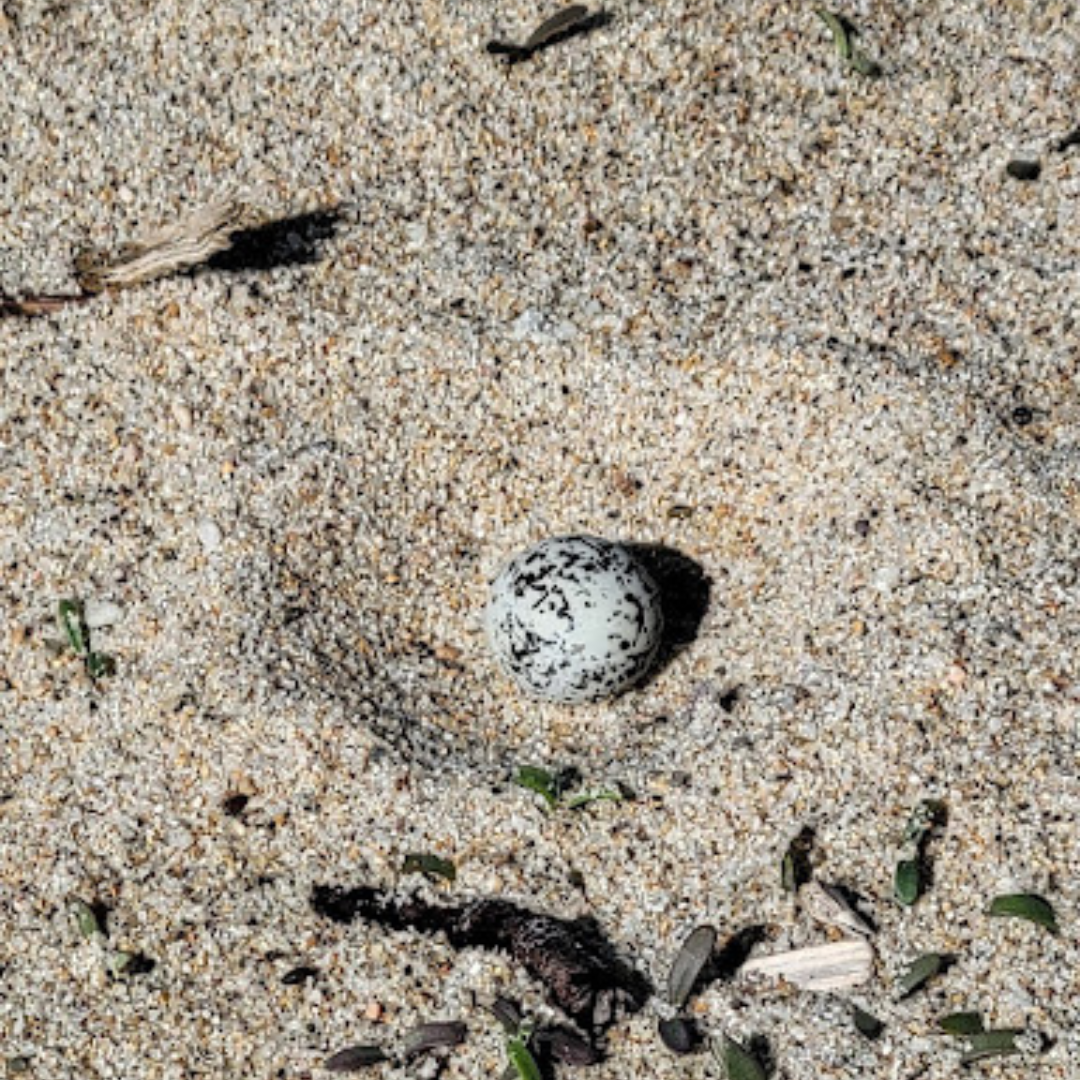Western Snowy Plover
Wonders of Wildlife
On March 4, 2024, the first Western Snowy Plover egg of the season was discovered, marking a significant conservation milestone. This noteworthy find highlights the importance of protecting these nesting sites along our coastal areas.
The Western Snowy Plover once numbered in the thousands. Their population has declined due to habitat loss and disturbance. Today, it is estimated that there are fewer than 2,500 birds along the Pacific Coast. Federally listed as Threatened under the Endangered Species Act since 1993, this bird is likely to become endangered, and may soon face extirpation across a significant portion of its historic range. This small, “sparrow-sized” bird inhabits beaches and dunes, finding food by running up and down the shoreline, pecking at prey.
The breeding season begins in mid-March and lasts until mid-September. The number of Western Snowy Plovers on our beaches is an indicator of the health of our coastal ecosystems. Seemingly benign beach activities like walking in their habitat or having dogs within nesting areas can pose significant threats to these beautiful birds. Plovers flee their nests due to perceived threats, resulting in the abandonment of their nests. Eggs and hatchlings face the risk of potentially being trampled underfoot.
Western Snowy Plovers will survive as a species as long as we protect them and their very limited and exceedingly delicate habitat. It is best that dogs are not brought into Western Snowy Plovers’ nesting areas and known habitats, because they perceive dogs, whether on leash or off, as predators. If you take your canine pals to the beach, please keep them on leash at all times and stay on designated trails and within appropriately designated areas to minimize disturbance to nesting sites and habitats. Swim, play, and walk your dog 50-yards away from fenced off and signed habitat areas.


Our parks and preserves are not just for humans. Please check out this video short on the Western Snowy Plover and do your part to help protect this important species.
